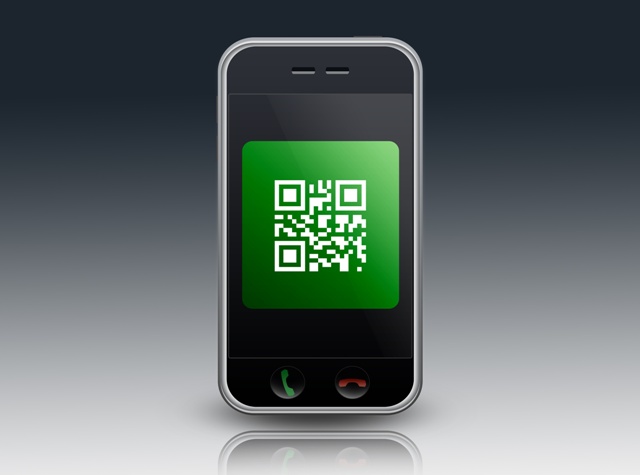Invisible QR codes to combat fake bank notes
Nanoparticles used to add extra security in bid to battle counterfeit goods.


Researchers in the US have invented an invisible quick response (QR) code made from nanoparticles in an attempt to add more security to existing techniques to combat counterfeit goods, such as fake bank notes.
Publishing their research in the journal Nanotechnology, the researchers from the University of South Dakota and South Dakota School of Mines and Technology said the new style of QR code could also be used to authenticate virtually any solid object.
The QR code is made of tiny nanoparticles that have been combined with blue and green fluorescence ink, which is invisible until illuminated with laser light. It is generated using computer-aided design (CAD) and printed onto a surface using an aerosol jet printer.
The researchers said the QR code would add an increased level of security over other counterfeiting methods as the complexity of production makes it very difficult to duplicate.
Combining blue and green inks also allowed researchers to try out a variety of characters and symbols in different colours and sizes, varying from microscopic to macroscopic. Embedding these into the QR code further increases the level of security.
Under normal lighting conditions the QR code is invisible but becomes visible when near infra-red light is passed over it. Once illuminated by the near infra-red light, the QR code can be read by a smartphone.
The nanoparticles used in printing the QR code are both chemically and mechanically stable. This meant they could withstand stresses and strains. To prove this, the researchers printed the QR code onto a piece of paper and then randomly folded it fifty times; the code was still readable.
Sign up today and you will receive a free copy of our Future Focus 2025 report - the leading guidance on AI, cybersecurity and other IT challenges as per 700+ senior executives
The QR code has also been printed on glass and flexible plastic film to demonstrate its usage on a wide variety of commercial goods. The researchers said that as the QR code is invisible it is also beneficial as it would not interfere with the appearance of goods using the technique.
"The QR code is tough to counterfeit. We can also change our parameters to make it even more difficult to counterfeit, such as controlling the intensity of the upconverting light or using inks with a higher weight percentage of nanoparticles," said Lead author of the study, Jeevan Meruga.
"We can take the level of security from covert to forensic by simply adding a microscopic message in the QR code, in a different coloured upconverting ink, which then requires a microscope to read the upconverted QR code."
Rene Millman is a freelance writer and broadcaster who covers cybersecurity, AI, IoT, and the cloud. He also works as a contributing analyst at GigaOm and has previously worked as an analyst for Gartner covering the infrastructure market. He has made numerous television appearances to give his views and expertise on technology trends and companies that affect and shape our lives. You can follow Rene Millman on Twitter.
-
 AI is creating more software flaws – and they're getting worse
AI is creating more software flaws – and they're getting worseNews A CodeRabbit study compared pull requests with AI and without, finding AI is fast but highly error prone
-
 Cohesity deepens Google Cloud alliance in data sovereignty push
Cohesity deepens Google Cloud alliance in data sovereignty pushNews The pair’s expanded collaboration will focus on new integrations for AI, cybersecurity, and data protection
-
 MWC 2012: News roundup
MWC 2012: News roundupNews We round up all the news and announcements from this year's Mobile World Congress (MWC) event in Barcelona.
-
 Head to Head: Google Nexus One vs Apple iPhone 3GS
Head to Head: Google Nexus One vs Apple iPhone 3GSReviews The Google Nexus One is Google’s first foray into the smartphone arena, but how does it compare to Apple’s iPhone 3GS, the current touchscreen favourite? We put the two devices head to head.
